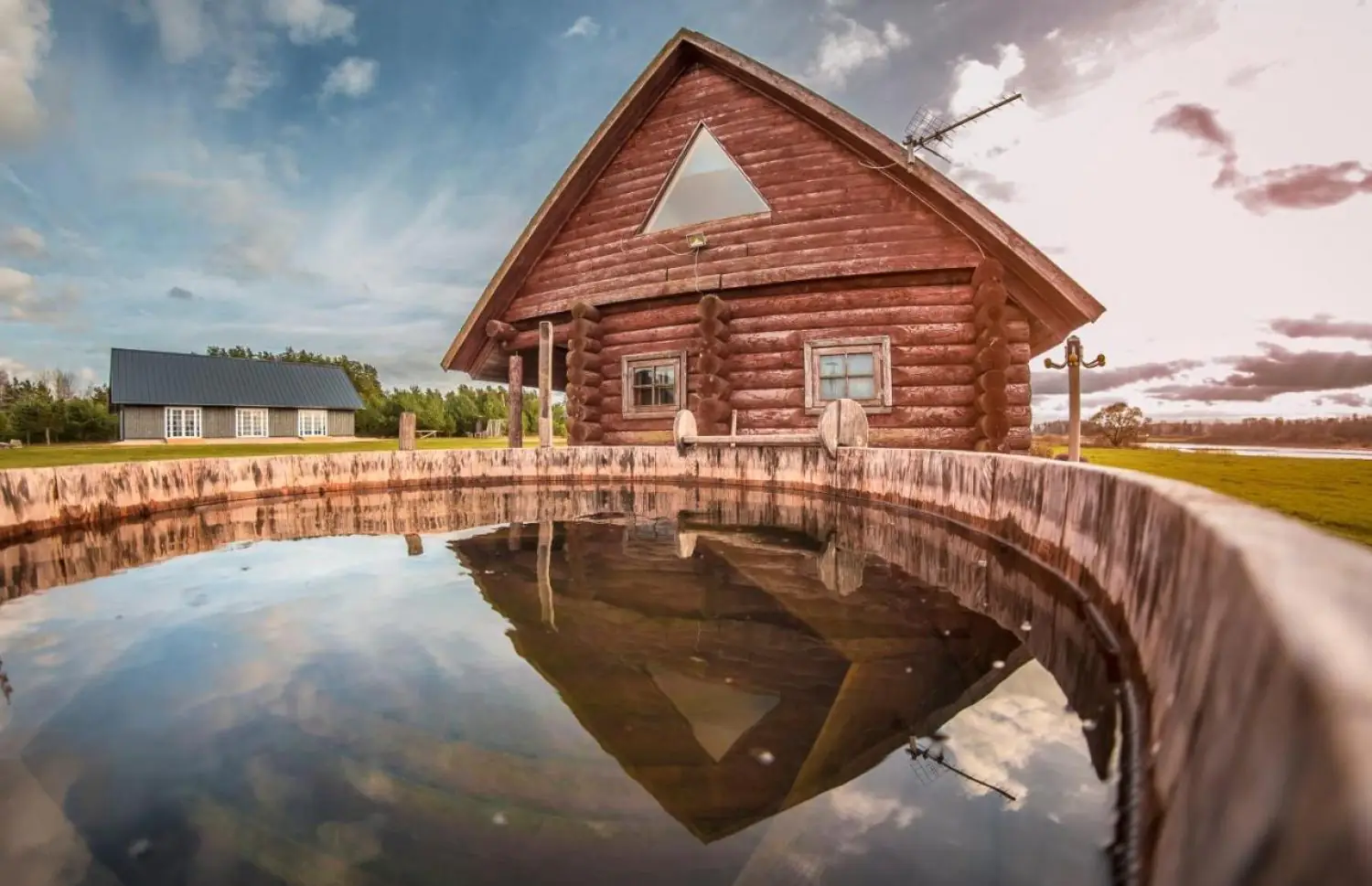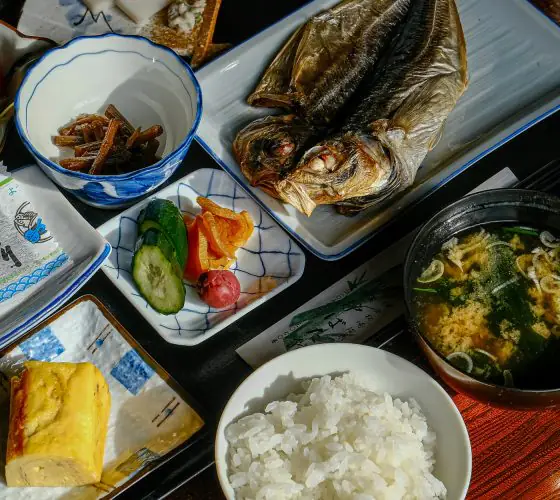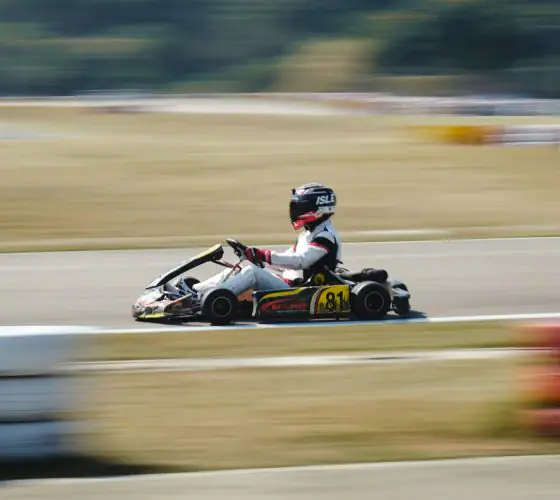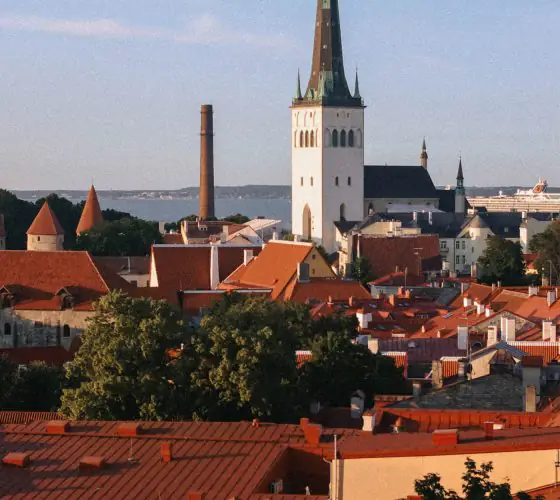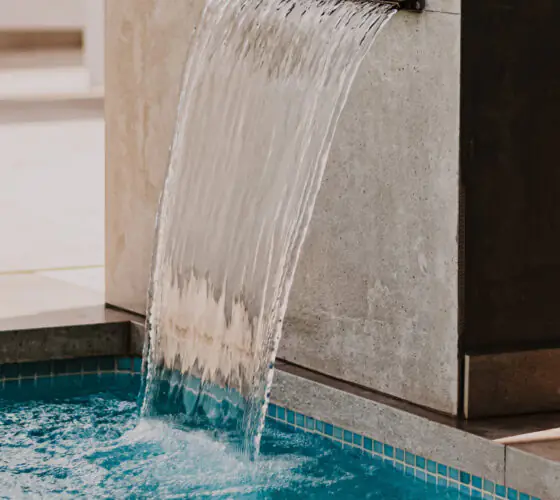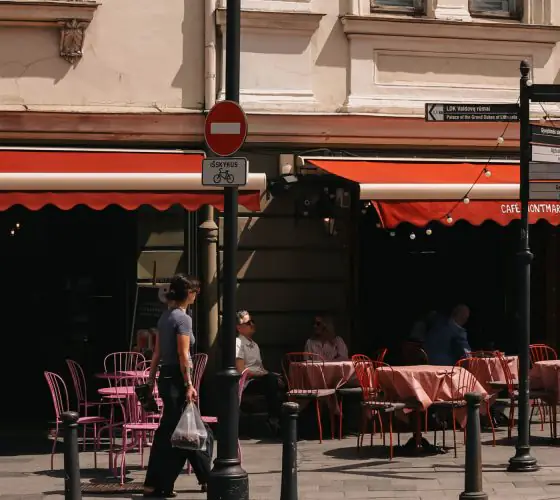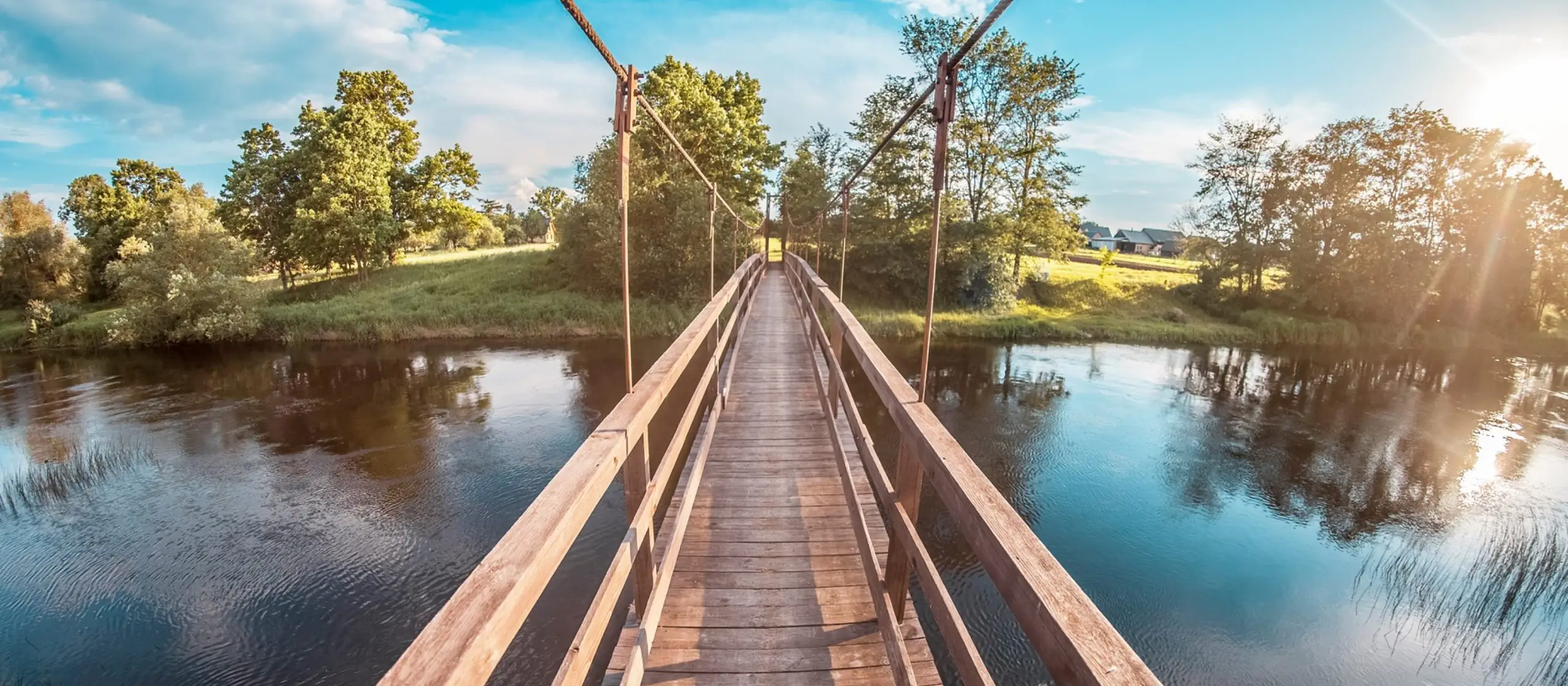
What to see?
Glass museum and the remains of a glass factory
Perhaps the main symbol of Līvāni is the glass factory, which operated from 1887 to 2008. The development of the glass industry was facilitated by the mining of quartz sand and dolomite in the vicinity of the city, used in the production of glass mass, as well as peat as fuel for furnaces. In addition to glassware, various corks were made here for corking bottles. The building of the cork factory existed in 1908–1929 on the site of the present Lutheran church.
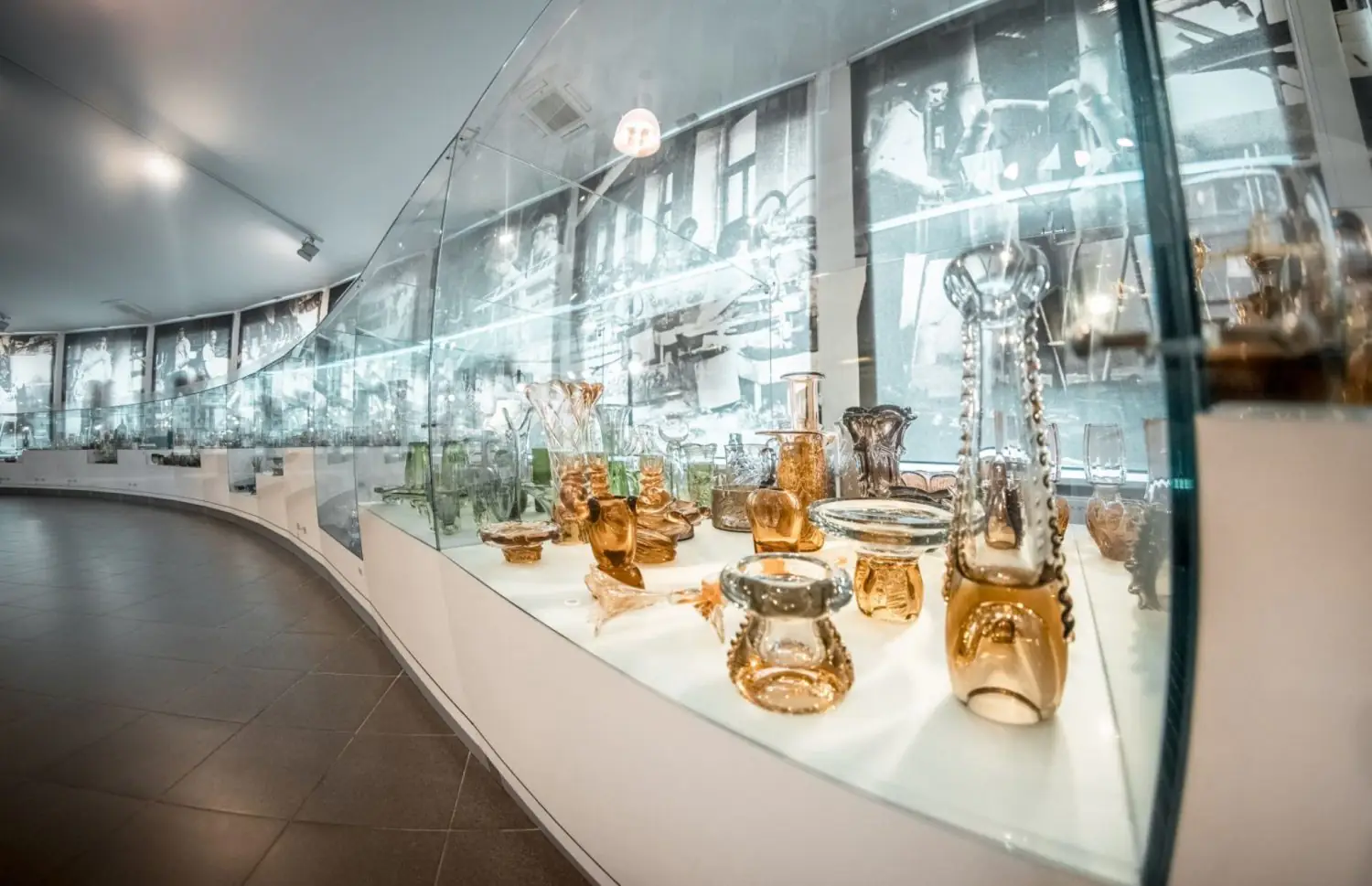
In its 120-year history, the Līvāni Glass Factory has been shut down many times due to wars and bankruptcies. At various times, it provided jobs for hundreds of residents, and its closure forced people to move to other regions in search of a better life. For example, in 1987, it employed over 1,000 people, which at the time was about 1/12th of the entire population of Līvāni. Who knows, we may yet see a new boom in manufacturing.
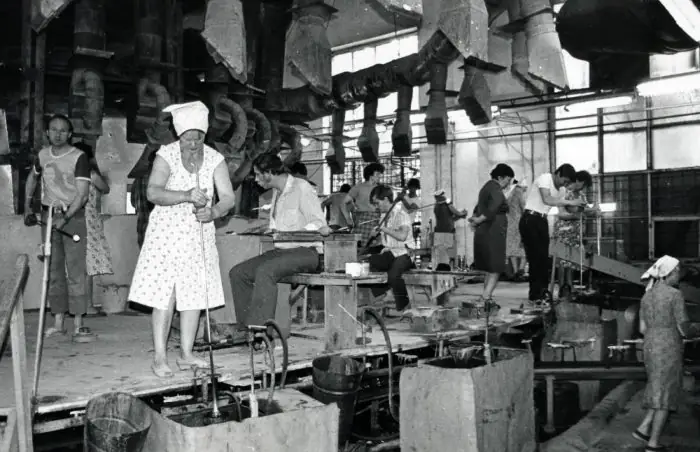
Although the factory now stands in ruins, the production of glass products in the city has not stopped. The Center of Glass and Crafts, established in 2003, has a museum dedicated to the history of the enterprise. Here, master classes are held on the production of various decorative items and tableware: glassblowers create magnificent shapes out of red-hot colored glass before the visitors’ eyes.
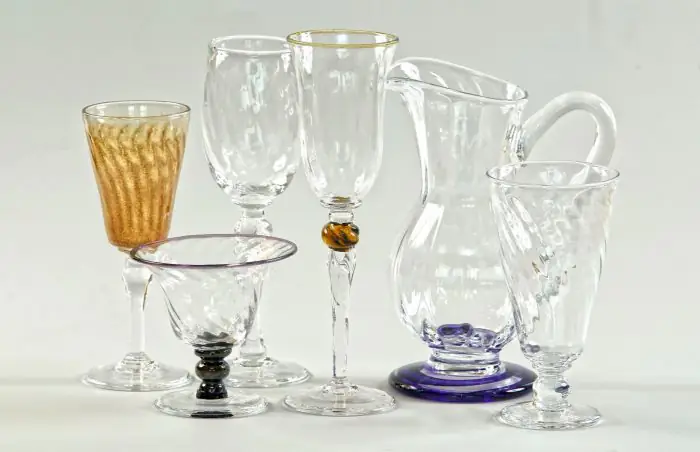

Daugava ferry crossing
Near the city there is a unique mode of transportation in Latvia—the Līvāni–Dignāja ferry crossing. There are only a few such ferries in the country: in Klidziņa (currently under repair) and on the Gauja River in the town of Līgatne. A few months ago it was possible to cross the River Daugava by ferry at Dunava, but recently the ferry was closed.
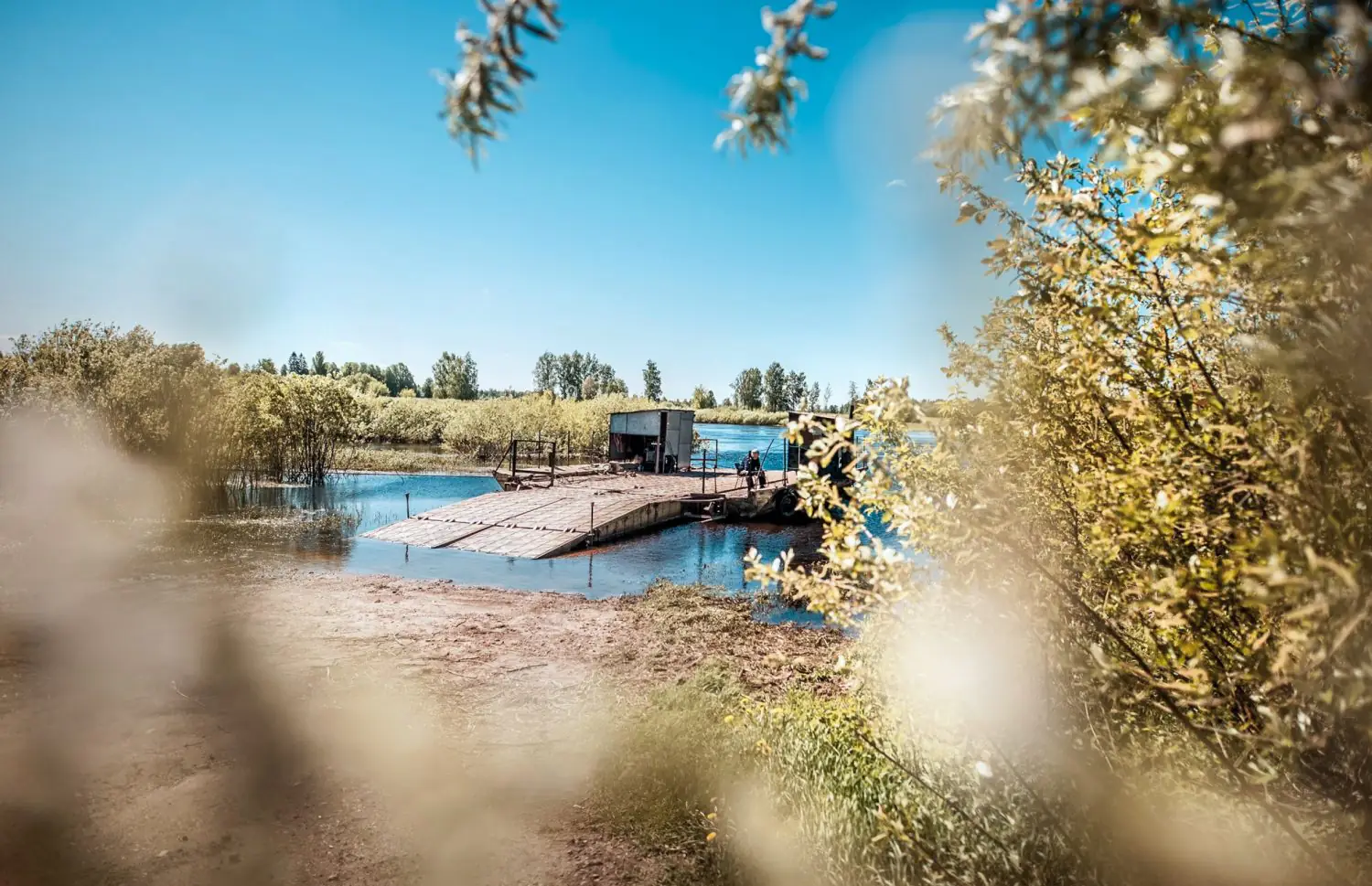
On the other side of the river you will find endless fields and forests of the most non-urbanized region of Latvia—Sēlija. The ferry is adapted for people and their personal transport: from cars to bicycles. It operates daily from 7:00 to 21:00, except for the winter period. If you plan to use the ferry crossing, it is better to contact its employees in advance. Contacts and other information can be found at the link.
Please note that during periods of flooding of the River Daugava (most often in April) the ferry crossing may be flooded and closed indefinitely.
Narrow gauge railroad and preserved trains at the peat mining site
There are many remnants of narrow gauge railroads in Latvia. We have already told about their history in the Sēlija region. A few kilometers away from the town of Līvāni there is a large peat factory Līvānu Kūdras fabrika, near which a section of narrow gauge railroad has been preserved. Along the tracks running between the Dubna River and the entrance to the factory, there are various rusty wagons. Fans of old railroad equipment will find this place particularly interesting.
Typical individual houses of the Soviet period
At the end of the 1970s, the Experimental house building complex was established in the city. For more than ten years, prefabricated single-family houses for rural areas were produced here. The factory produced chipboard walls and other elements, then delivered them to the construction site, and then assembled the house on a pre-prepared foundation in about 16 hours. This method was thought out by specialists headed by the engineer Viktors Taukulis. The mill used technology and equipment from the Swedish company Kährs.
Līvāni prefabricated wooden houses were built all over Latvia (mostly in state farms), but their appearance and practicality were criticized more than once. For example, in the 1986 book “Architecture of Soviet Latvia” it is written: “The supposed mobility of the factory, which allowed to produce several types of buildings at the same time, turned out to be a fiction. At present only two or three types of dwelling houses of the most elementary form, having little in common with the traditions of our rural construction, are produced”. Nevertheless, standard single-family houses continued to be produced at the factory until Latvia’s secession from the USSR. There is a short video on YouTube that shows the production process, as well as the houses themselves and exemplary interiors.
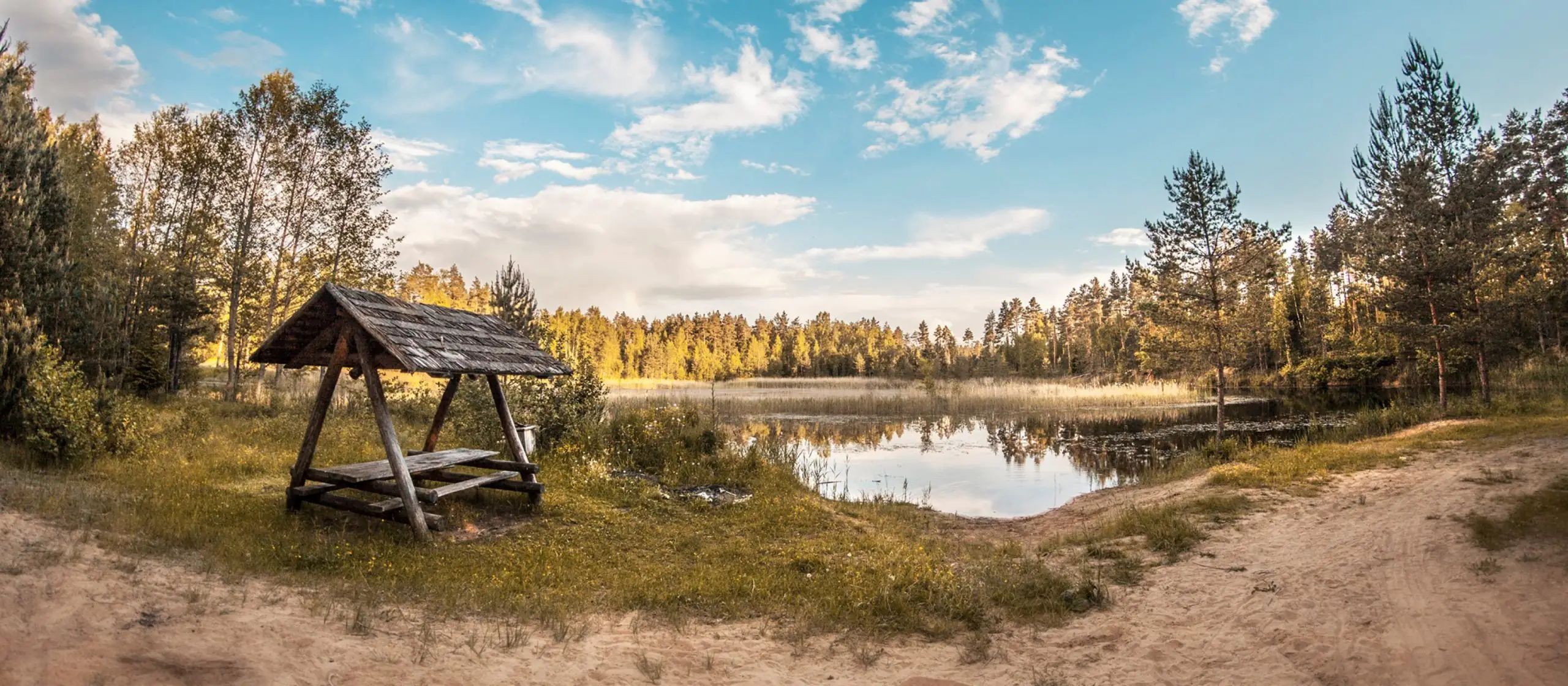
Churches and historic buildings
There are still houses of a venerable age in Līvāni. You can see many of them by walking along Rigas Street. However, there is an unpleasant nuance—it is a bit noisy here, as there is no bypass road around the city and all cars pass through the center.
A little away from the main street are several churches of different denominations, which are also worth seeing. One of them you will notice immediately if you come to the city by train or bus. Next to the railroad stands a Lutheran church designed by Krustpils engineer Pēteris Pētersons. It was built from 1929 to 1932 in neo-Gothic style with a touch of Latvian Romanticism—a popular style combination of those years.
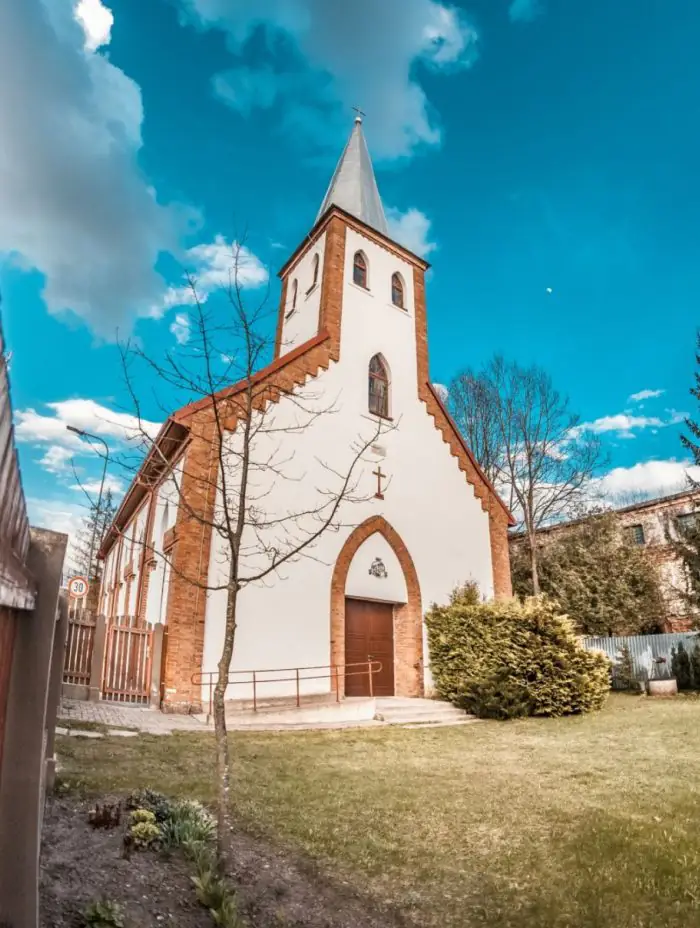
Almost at the very edge of the River Daugava bank, St. Miķeļ’s Catholic church was built in 1861. During the First World War it was almost completely destroyed and rebuilt by 1924. The architectural appearance combines Gothic, Romanesque and classical traditions. The Latgale region, in which the Līvāni are located, was under the rule of the Polish-Lithuanian Commonwealth for a long time, which led to the spread of Catholicism in this part of Latvia.
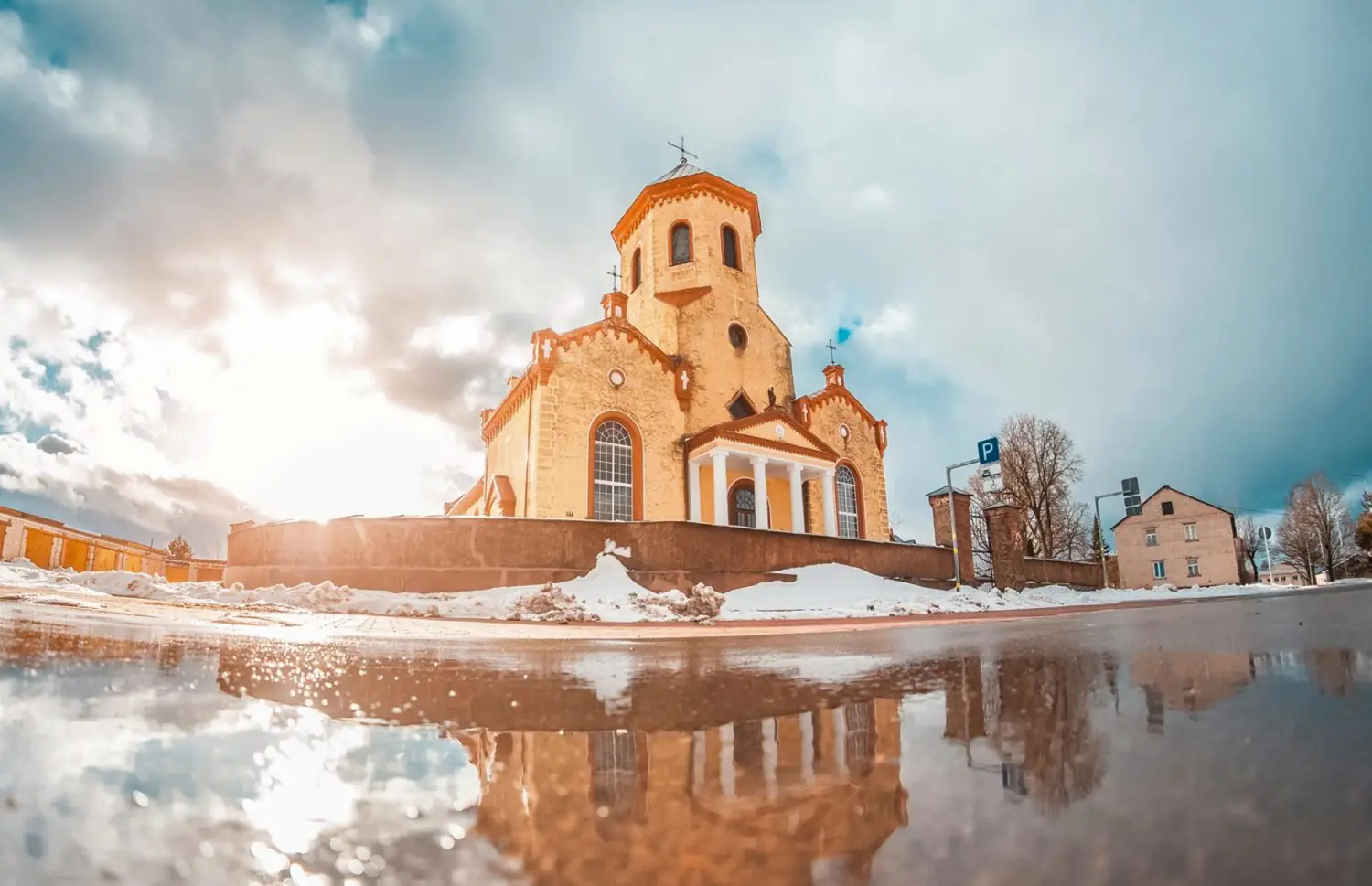
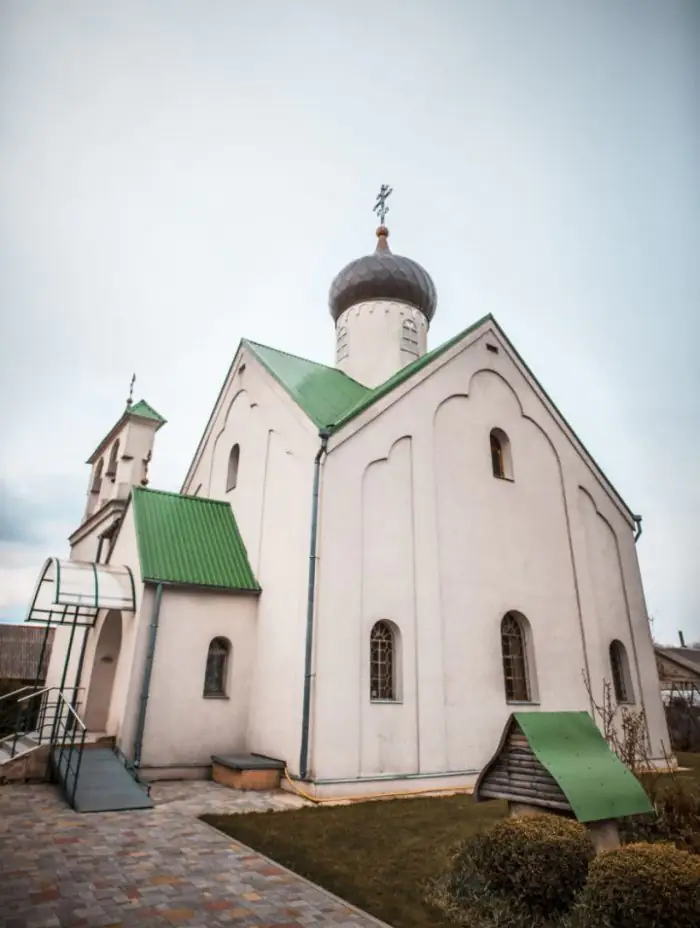
On the shore of the Dubna River, a tributary of the Daugava, stands an Orthodox church built in 1939 in the spirit of ancient Pskov-Novgorod architecture. It was designed by one of the most famous church architects in Latvia—Vladimirs Šervinskis. During the Soviet years the church was closed, the dome was dismantled and the building was turned into a warehouse. The restoration of the church began only in 1997 and was completed ten years later.
Outside of the city, there are several churches in the Līvāni region that are also worth seeing. One of them is the Catholic church of St. Jēkabs. It was built of wood in 1911–1913, and in the following decades it was repeatedly completed and rebuilt (including in Soviet times). The result is an interesting example of the combination of stone and wooden elements in one building.
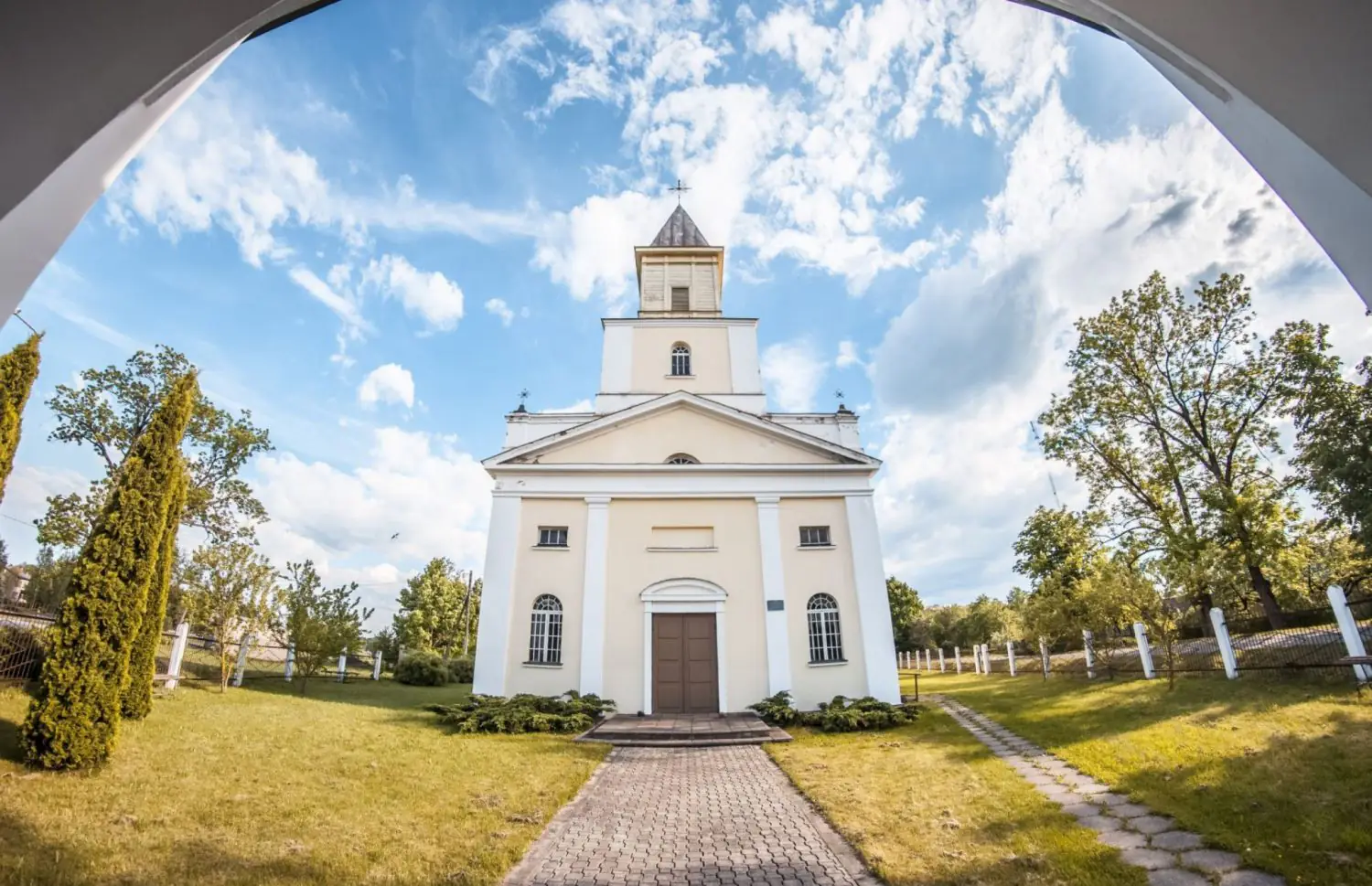
A very picturesque Catholic church stands 15 kilometers upstream of the Daugava River. The Magdalēna’s church was built in 1821 of rubble boulders with crushed stone inclusions.
It is located almost at the very bank of the river in the middle of a small field, and an alley of several large trees leads to the main entrance. There is a holy spring with clear water nearby.

And perhaps the most unusual church in the Līvāni region is located in the village of Jersika. In 1866 it was made in Odessa, and then until 1904 it stood in Daugavpils (in those years the city was called Dinaburg and Dvinsk). In 1905 the church was moved and consecrated in a new place, where it is today. The uniqueness of this building is that it is the only metal church in Latvia. Its walls are made of a metal frame filled with steel sheets on rivets. On the inside, the structure is covered with brick, plastered and painted.
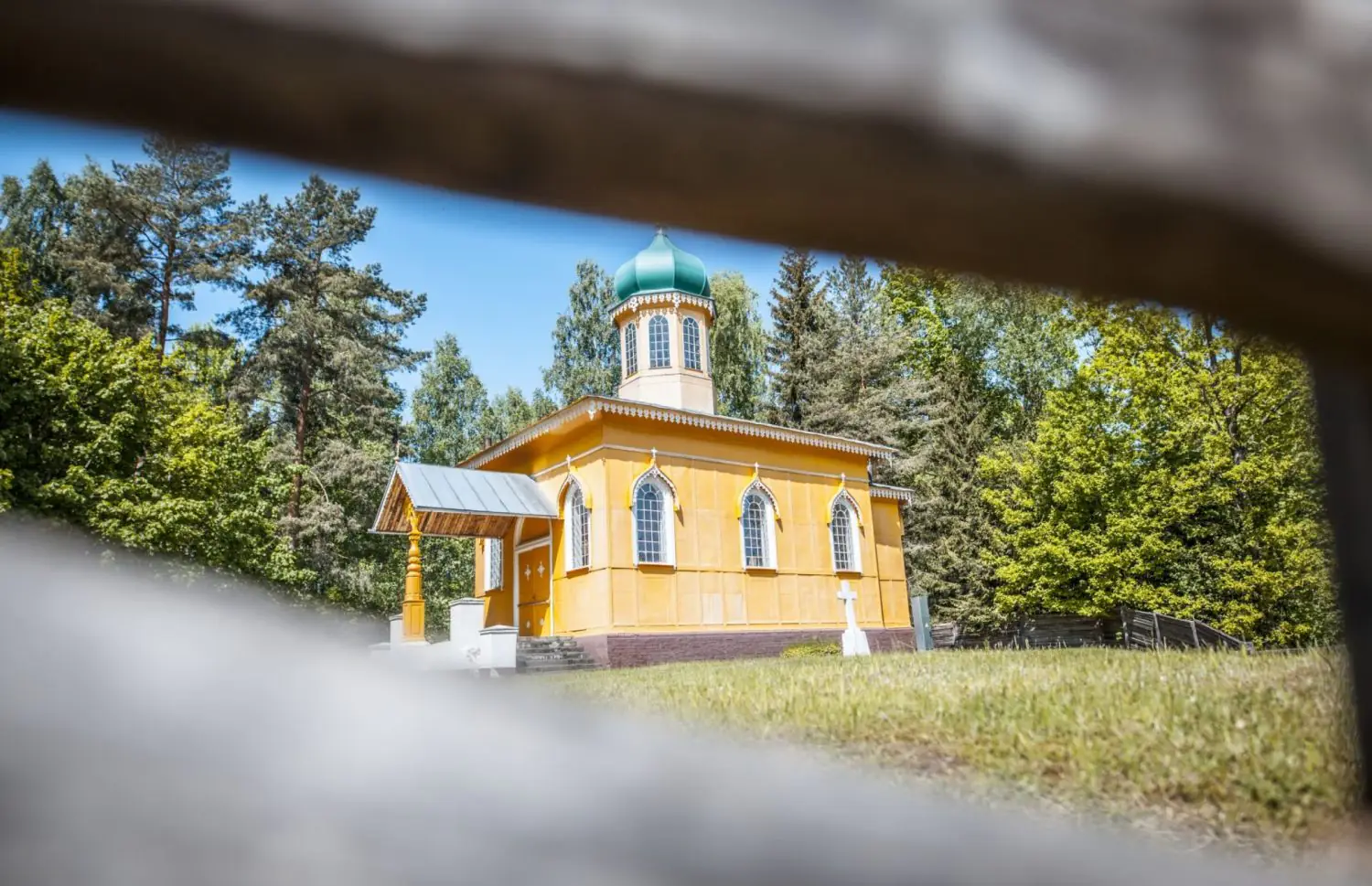
Jersika is also interesting because it was from these places that Christianity (Orthodoxy) began to spread in Latgale. As it follows from the ancient manuscript “Chronicles of Livonia”, the first impulses of the Christian faith came here from the Polotsk diocese of the Kiev metropolis in the 11th century and were connected with the ancient Rus’ desire to control these lands.
There is also an authentic building of the railway station built in 1861—the same age as the Riga–Daugavpils railroad.
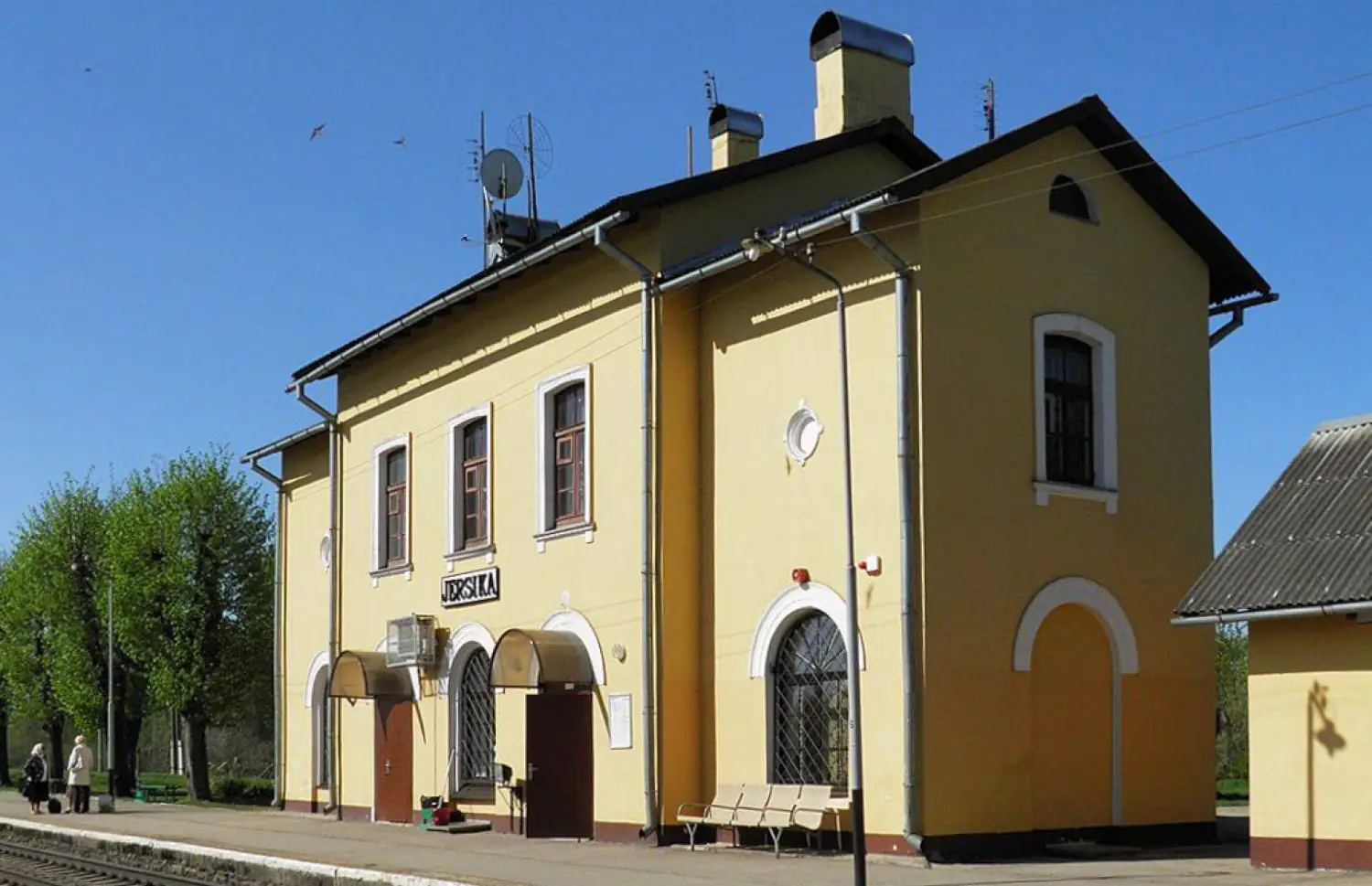
Serial houses and the architecture of postmodernism
A significant part of the city is built up with typical Soviet houses of several series. Sometimes there are non-standard solutions in their architectural appearance. For example, on the end of a five-storey building built in 1971 at the corner of Rīgas and Rūpniecības Streets, a multi-meter metal relief depicting a female figure has been preserved. Similar decorative elements are still often found in various localities in Latvia.
The house at 59 Rīgas Street clearly shows eclectic architectural elements reinterpreted in a postmodernist spirit. Its central facade is slightly recessed, which is similar to the appearance of historical houses with front court of honor. Only here instead of a courtyard there is a small store. The side walls of the house are decorated with four decorative arches.
Toward the end of the Soviet Union, Latvian architecture underwent major changes. Postmodernist playfulness, which was a trend worldwide in the 1980s, is layered here with local sociopolitical processes within the country. Protest moods are growing, more and more people are not afraid to stand up for independence and national self-determination. As a consequence, regionalism—a trend that conceptualizes the country’s cultural heritage—is clearly manifested in architecture.

After Latvia’s secession from the USSR, regional trends have developed in several directions. Some of the architects of the 1990s remain faithful to the postmodernist principles of the previous two decades. Their projects stylistically echo the historical buildings of Latvian cities and folk architecture. Others cross regionalism with trends popular at the time: high-tech and fusion. Such works are often criticized for being too bold (active use of glass, dynamic forms, contrasting colors, etc.).
There are several striking examples of postmodern architecture in Līvāni. At 108 Rīgas Street stands a building with an eclectic reinterpretation of various elements: an angular bay window, a high triangular roof, a balcony with an ornamental lattice, intricately shaped windows and semicircular walls typical of 1930s buildings. Similar houses can be found all over the country, but this example stands out for its particular elegance.
Not far away, at 85 Rīgas Street, you will see a textbook example of Latvian postmodernism—classic brick walls and pitched tiled roof combined with long windows typical of modern architecture.
The Center of Glass and Crafts looks very expressive. It was created in 2003 on the site of the former mansion of the Korff family, which was destroyed during the First World War. Several surviving historical buildings (a barn and part of the vaulted cellar) were restored and included in the new project. The result is an interesting example of symbiosis between traditional boulder architecture and the non-standard round shape of a modern building.
Where to eat
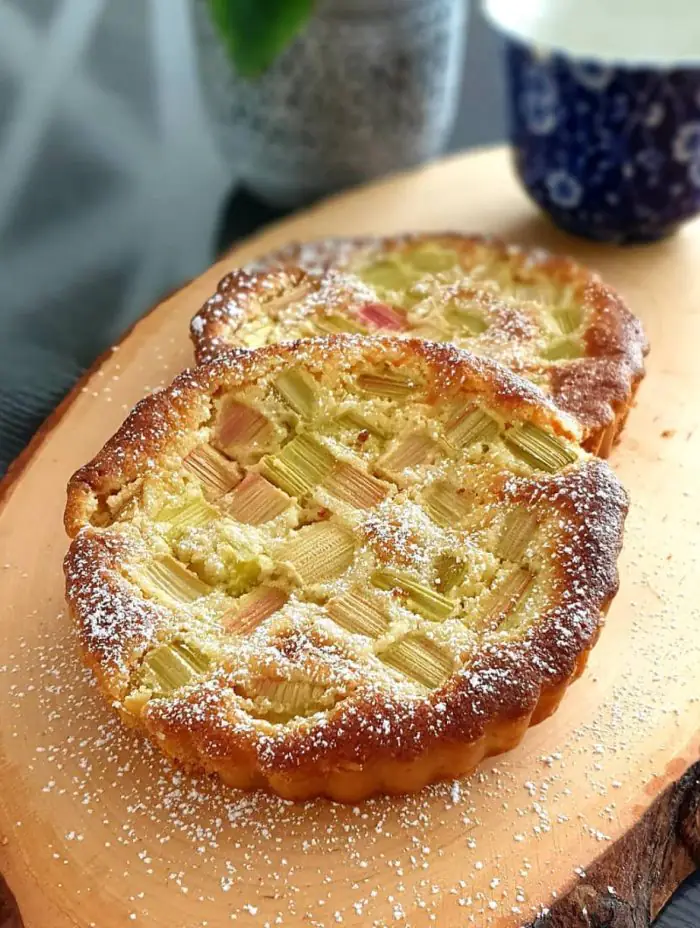
Enjoy local pastries and a cup of coffee or tea at cafe Monika, open every day from morning to evening and very popular with locals.

For a full meal, you can eat at 5. elements, a café with home-cooked food, and Kebabosta bistro. Both are located in the very center of the city and offer a wide range of dishes, from fries and burgers to local cuisine.

Those who like to have a glass of beer or something stronger in the evening should visit the Boycott Bar, located on Rūpniecības Street, not far from the train station.
Local products and things
Handmade Latgola design center has been unofficially named «Latgales IKEA» for the large number of items gathered under one roof. About 250 modern handicrafts from the eastern region of Latvia are presented here. And visually, the place does resemble the famous Swedish store a bit. The goods are displayed in different interiors: bathroom, living room, kitchen, bedroom and corridor. But here you will buy not a typical thing that millions of other people have, but unique products. The staff of the design center will tell you about the authors and their works. There is an opportunity to rent a two-room apartment for 6 people and spend the night in colorful Latgalian interiors.
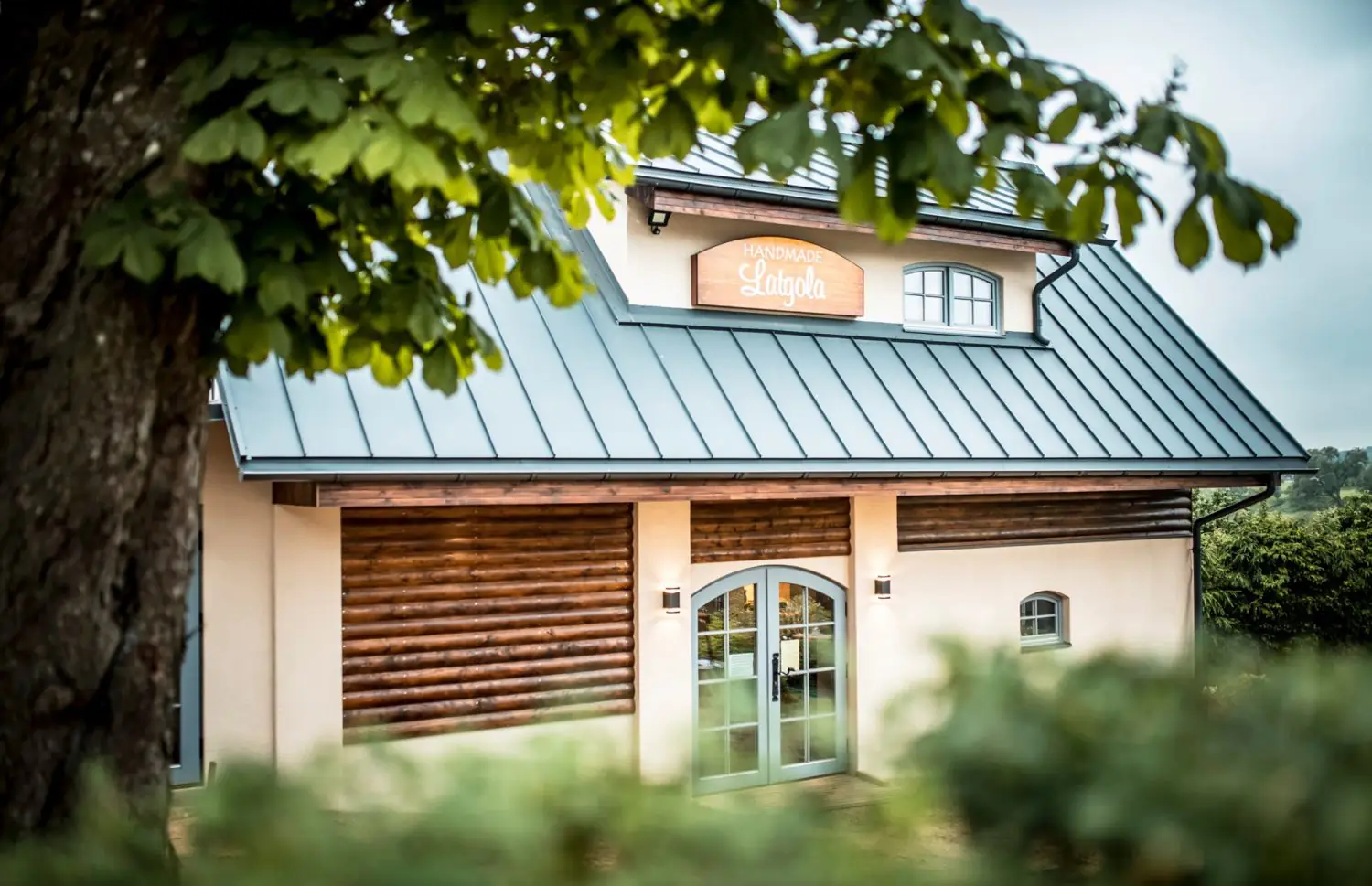
On the outskirts of the city there is an amazing garlic kingdom—Livānu ķiploks. Even marmalade and sweet lollipops are made of garlic here! You can agree in advance with the owners of the farm and attend a tasting of their products or just buy something from several dozens of products: fragrant oil with various additives, paste from garlic flowers, garlic “jam” and much more. These farm products are sold not only in Līvāni, but also in other Latvian cities.
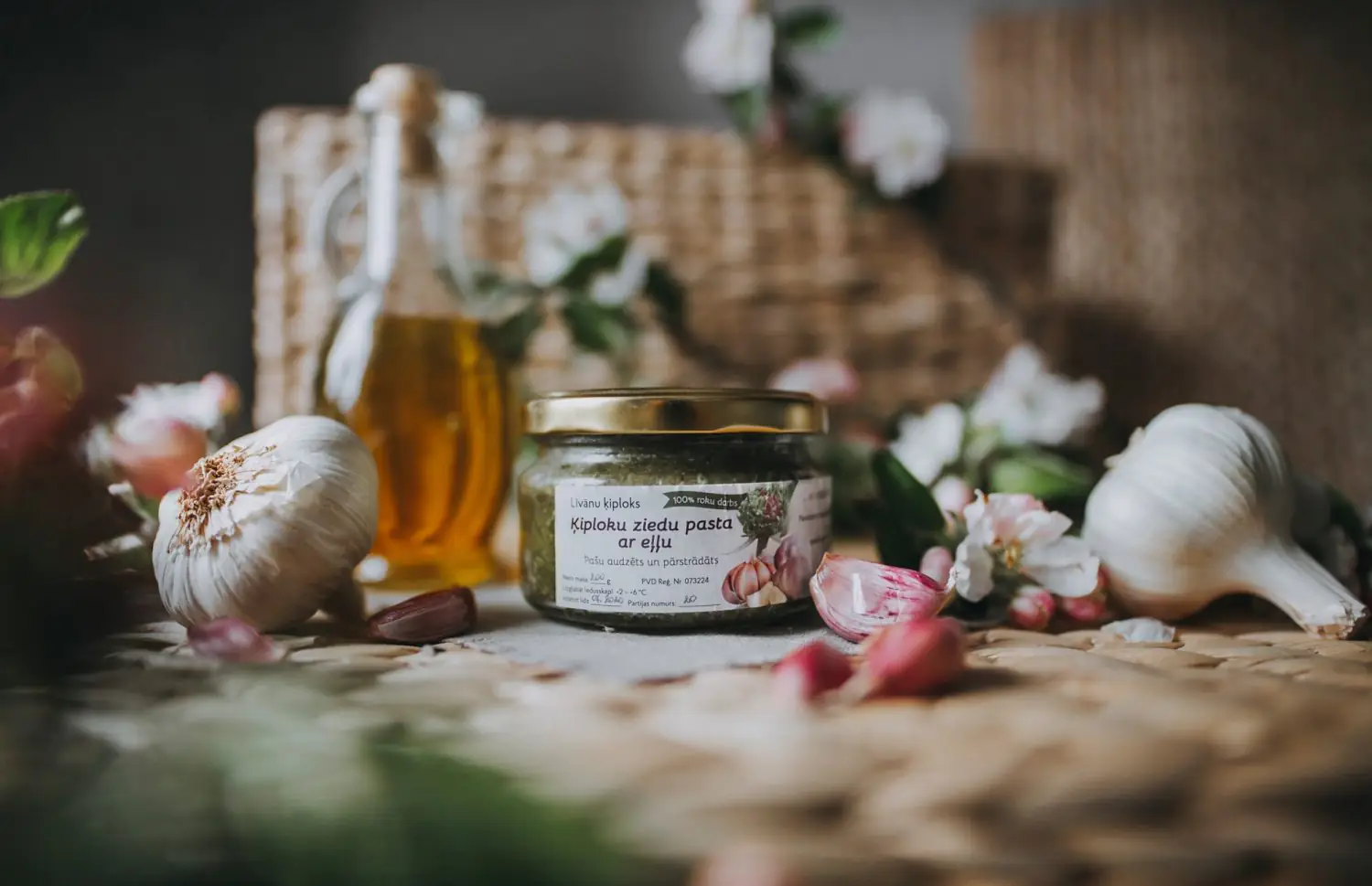
In the village of Sutri there is a small cosmetic production facility Rasa Botanicals. Here they make body care products from natural raw materials and plants collected in Latvia.
Among their products are: hair elixirs, scrubs, massage oil, hand sanitizers, and extracts of various plants. You can also sign up for master classes on natural cosmetics production.
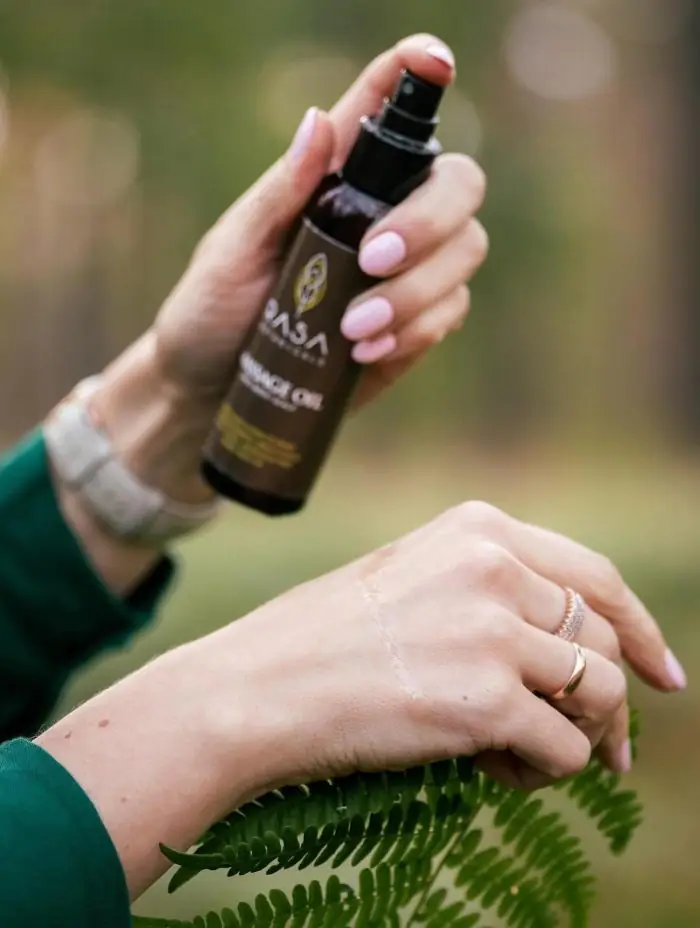
About 25 kilometers away from Līvāni, in the remote farm Mālkalns, you can get acquainted with the activities of Latgalian ceramics workshop and take part in creating your own work of art. The workshop must be arranged in advance. If you don’t want to make anything with your own hands, you can simply buy ready-made pieces.
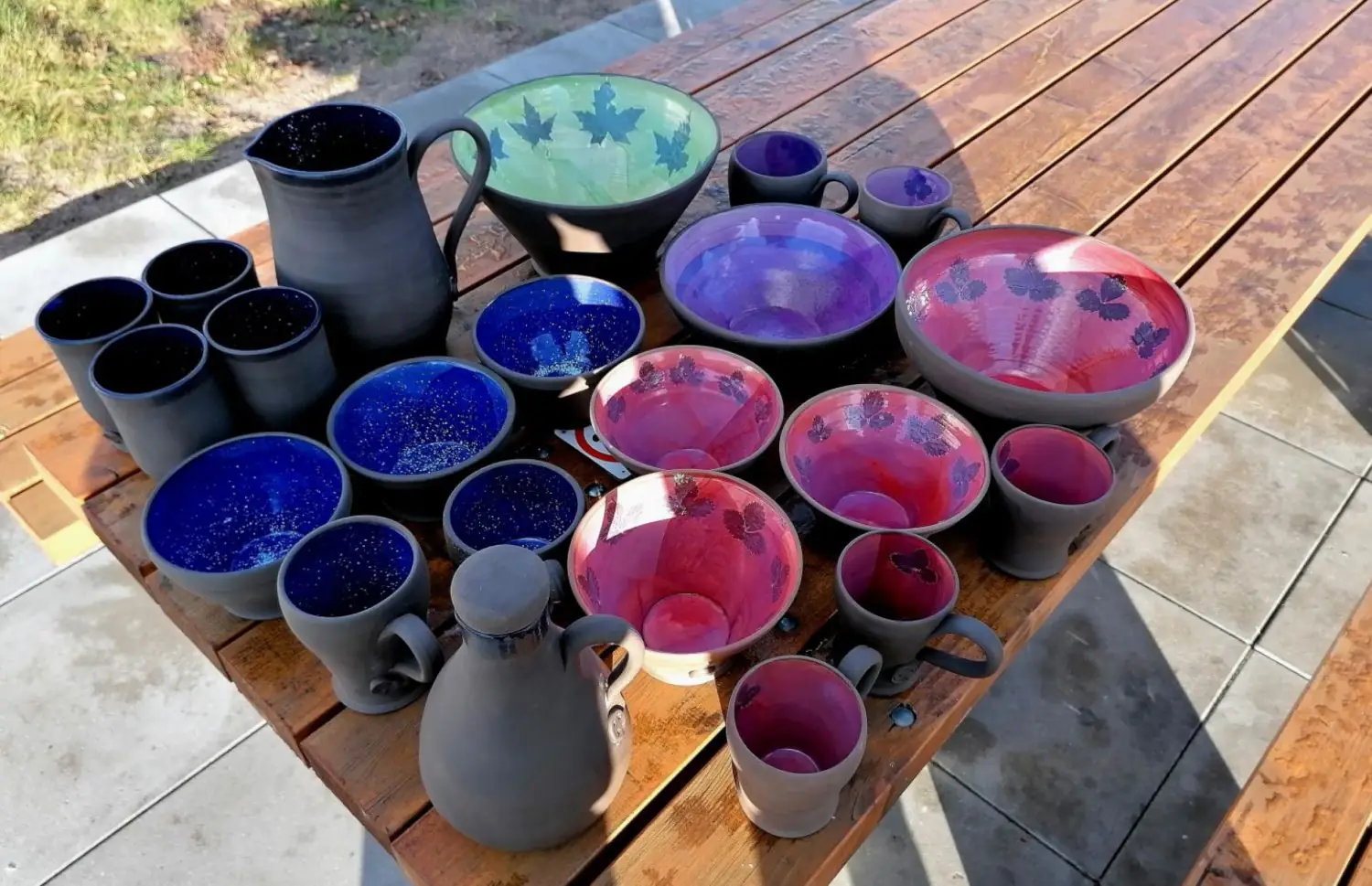
Decorations and other items made of the famous local glass are sold at the museum and craft center’s ticket office. You can choose from a variety of items: glasses, wine glasses, shot glasses, beer mugs, pitchers, plates, decorative dishes, vases, Christmas decorations, decorative figures of animals, birds, fish, fruits, vegetables, flowers and more.
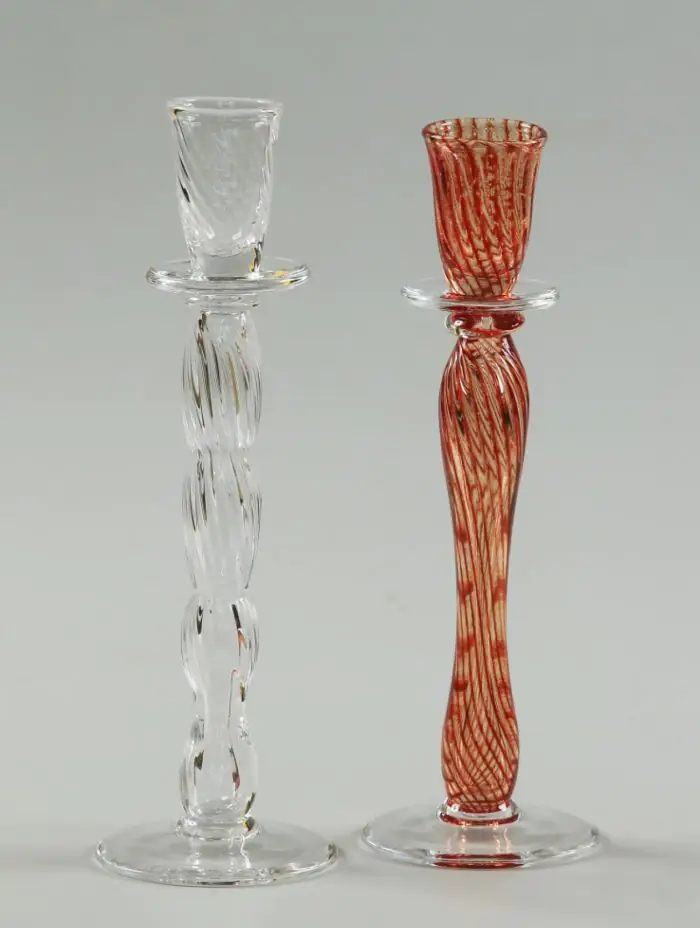

Where to rest and stay
One of the most extraordinary places where you will relax in Līvāni is the bee house (Bišu namiņš). The small wooden structure has a bed for one person, where you can spend an hour of your life (or longer) surrounded by bees. But don’t worry, there is no direct contact with them—you will only hear the buzzing. It is believed that this sound relaxes and helps to calm down. Here you can also buy locally produced honey.
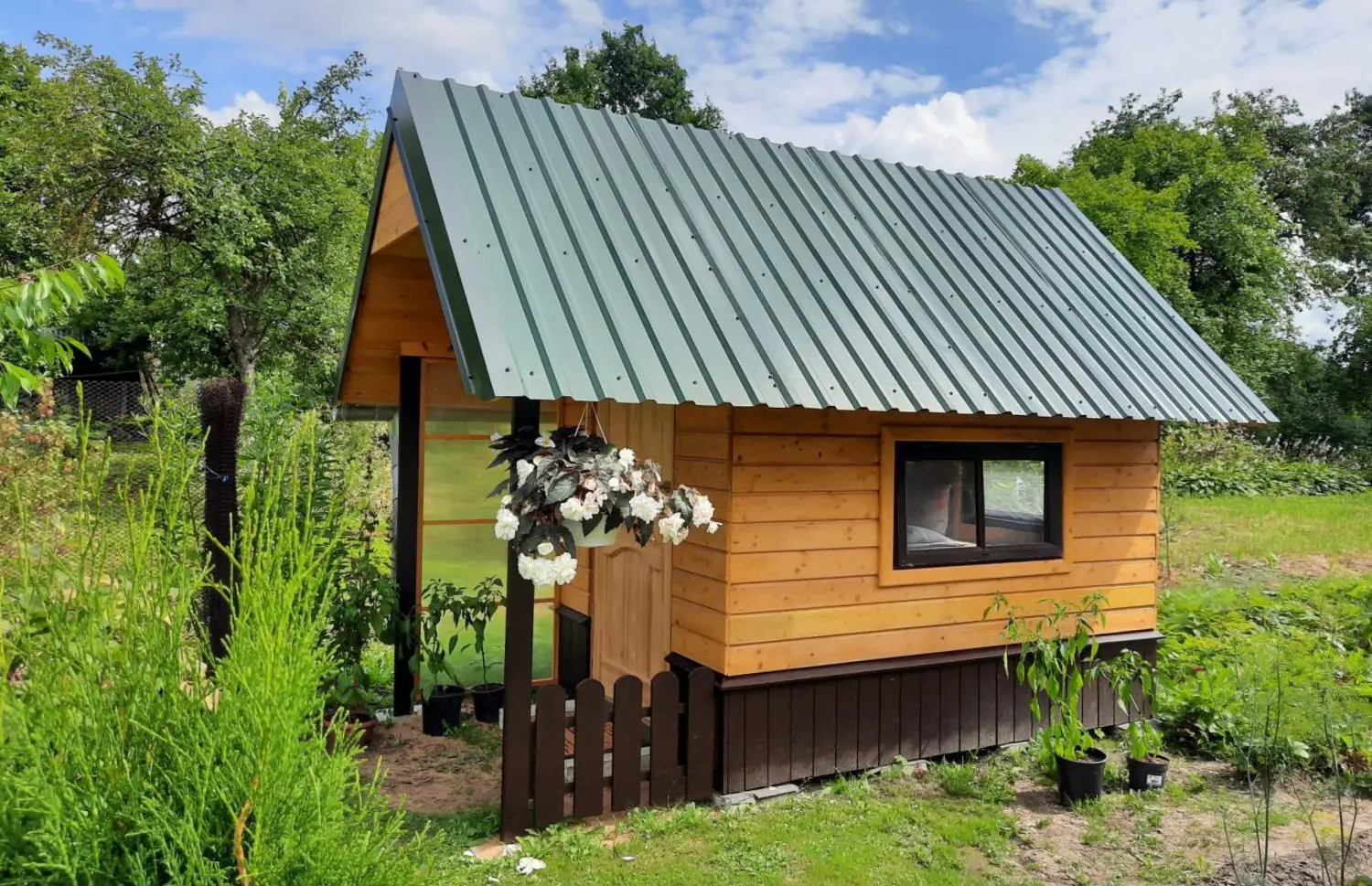
Avotiņs hotel and spa complex is located 8 kilometers from the city, on a quiet bank of the River Daugava. Here you can warm up in a bathhouse or sit in a wooden barrel with hot water in the open air. The complex also has a camping site with an equipped area for tents. This place is suitable for a complete vacation for one or several days.
